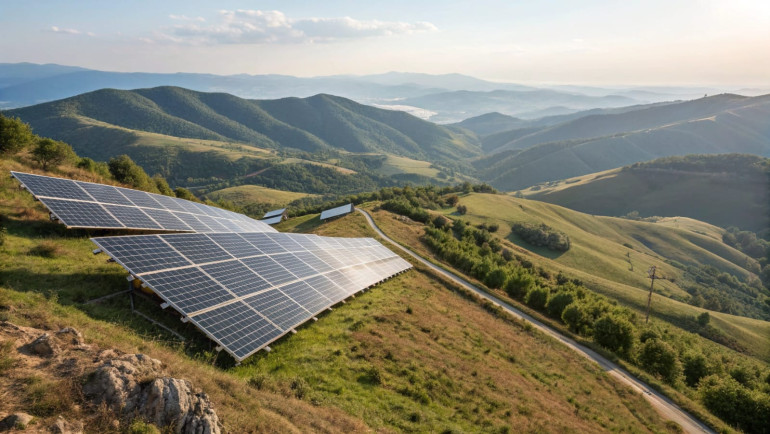
Follow India Renewable Energy News on WhatsApp for exclusive updates on clean energy news and insights
Choosing Between Bus Duct and Aluminium Cables for Ground-Mounted Solar Projects
Feb 07, 2025
When designing a ground-mounted solar energy project, one of the critical decisions involves selecting the right electrical connections between Inverter LT Panels and Inverter Duty Transformers. The two primary options in this regard are Bus Ducts and Aluminum Cables. This decision can greatly impact the project's efficiency, long-term costs, and overall performance. A techno-commercial evaluation of these two options helps in making an informed decision based on specific project needs.
Bus Duct:
Bus Ducts are specialized metal ducts designed for the efficient transmission of electrical power. They are considered highly reliable, offering low electrical losses and high conductivity, which ensures that the solar system operates at peak efficiency. One of the standout advantages of Bus Ducts is their capacity to minimize power loss during transmission. This, in turn, results in enhanced operational efficiency and long-term savings. Though the initial investment for Bus Ducts may be higher compared to Aluminium Cables, the benefits they offer, such as low maintenance costs and minimal downtime, can make them a cost-effective choice over the life of the project. Additionally, Bus Ducts have a straightforward installation process, contributing to faster setup times and reduced operational disruptions. The reliability and easy maintenance of Bus Ducts ensure consistent power delivery, which is critical in large-scale solar projects.
Aluminium Cables:
Aluminium cables are another common option for electrical connections in solar projects. They are typically more affordable upfront compared to Bus Ducts, which can make them an attractive option for projects with tight budgets. Aluminium’s flexibility and durability also make it a popular choice, particularly in situations where cost and ease of installation are paramount. However, despite these initial benefits, Aluminium Cables come with a set of challenges that may affect their long-term viability. One of the primary concerns is that Aluminium Cables are more susceptible to power loss and heat generation during transmission. This results in lower overall efficiency and can increase the energy loss in the system. Furthermore, Aluminium Cables require more intricate installation techniques, which can lead to longer setup times, potentially impacting project schedules.
In terms of maintenance, Aluminium Cables can incur higher costs over time. Their susceptibility to wear and tear, along with the need for regular inspections and repairs, may lead to increased operational expenses. This is a key consideration when evaluating the long-term sustainability of the project. Aluminium Cables are also more prone to damage due to external factors like environmental conditions and physical impacts, which could result in higher maintenance requirements over time.
Key Considerations for Decision-Making:
When choosing between Bus Duct and Aluminium Cables for a solar project, several factors need to be considered. The initial budget, long-term operational and maintenance costs, project timelines, and expected energy efficiency are all crucial elements. If the project aims for high operational efficiency and reduced maintenance in the long run, Bus Ducts may be the better choice despite their higher upfront cost. However, if the focus is on reducing initial expenditure and flexibility is more important than long-term efficiency, Aluminium Cables may prove to be a suitable option.
Ultimately, the decision will depend on the specific requirements of the solar venture, including the scale of the project, the expected lifespan of the components, and the importance of efficiency and cost-effectiveness over time. Each option has distinct advantages, and the best choice will align with the project’s broader objectives and resources.